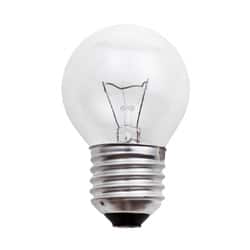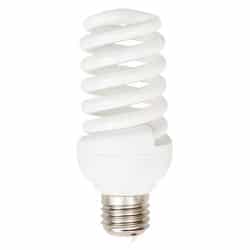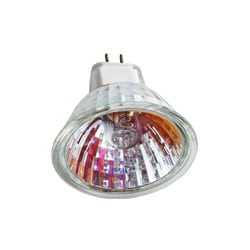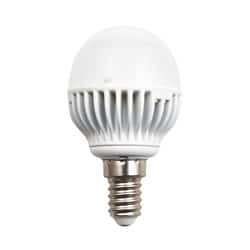An electrician can choose from a variety of lighting types, including incandescent, fluorescent, halogen and LED bulbs. These bulbs vary according to their initial cost, energy usage and longevity. You must consider these factors carefully to determine the best lights to use for a particular installation.

Incandescent
Incandescent bulbs generally consist of a thin tungsten wire, or filament, suspended between two electrodes. This assembly is enclosed in a glass bulb with a vacuum. The filament glows white hot to produce light, but does not burn due to the lack of oxygen. Incandescent bulbs are the most common and least expensive type of lighting. They typically last between 700 and 1,000 hours, but are less energy efficient than other types of lighting. Incandescent lighting has a warm quality that looks flattering on the skin. An electrician often connects this type of lighting to a dimmer switch.

Fluorescent
Florescent bulbs contain a partial vacuum with mercury and phosphor vapor. Electricity excites the mercury vapor, causing it to produce ultraviolet light. The UV light causes the phosphor vapor to emit visible light. Fluorescent bulbs may use as little as a fourth of the energy of incandescent bulbs and can last up to 10 times longer. The light from these bulbs appears harsher than that from incandescent bulbs. An electrician typically installs this type of bulb in a large area that requires more lighting such as a kitchen or workshop.

Halogen
A halogen bulb is similar to an incandescent bulb except that except the bulb contains an inert gas and a halogen element such as iodine instead of a vacuum. This allows a halogen bulb to operate at a much higher temperature than an incandescent bulb. The light from a halogen bulb is whiter than that from an incandescent bulb. They are more expensive, but also more energy efficient. An electrician typically installs halogen bulbs under cabinets and other recessed areas where people cannot look at them directly.

LED
A light-emitting diode, or LED, uses a semiconductor to convert electricity into visible light. This lighting type has been developed relatively recently and has only been available since the 1960s. LEDs produce low levels of light that are extremely energy-efficient. They only produce directional light, so an electrician typically uses them under counters and for illuminating control displays. This type of lighting often consists of large numbers of individual LEDs clustered together in an array to increase the amount of light. LEDs are relatively expensive, and typically cost at least five times more than florescent bulbs.
